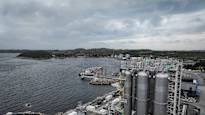According to the expert, technical solutions are needed to curb global warming much more than estimated and even that may not be enough.
2024 is going down in history as the year when the world’s average temperature exceeded the Paris climate agreement goal of 1.5 degrees for the first time. Also last year we visited nearby.
Exceeding the lower limit of the climate agreement will be monitored over a 10-year period, and exceeding it is not a surprise in itself, says a professor who was in Paris as a Finnish scientific expert Markku Ollikainen. In the contract year 2015, it was visible that 1.5 degrees will be exceeded.
However, 1.5 degrees was recorded as a goal that can be achieved at the end of the century, when emissions from coal and other fossil energy sources have been sufficiently reduced by 2050. The remaining emissions should be bound to nature or recovered.
– The climate scientists’ assessment was that 1.5 is technically possible and the world will not collapse if it is exceeded, because it can then be returned to with the help of sinks, says professor emeritus Markku Ollikainen from the University of Helsinki.
The special report of the UN’s intergovernmental climate panel, IPCC, which received a lot of attention in 2018, also confirmed that a return after the crossing is still possible.
– Now there are really dark clouds visible.
Ollikainen refers to Trump’s election as president in the United States, the periodic inactivity of UN climate meetings, and the strong opposition of oil countries and producers.
According to Ollikainen, there is hope that emissions in China can at least level off or perhaps turn to a decrease already this year. International Energy Agency The IEA predicts significant drop in China’s emissions for the next few years. In the United States, the reduction of emissions would seem to slow down with Trump instead.
According to Ollikainen, the countries’ emission trends could neutralize each other and even have the effect that China’s cuts in the next few years will also cause the world’s emissions to decrease.
According to the researchers’ thoughts, according to the agreement, the emissions should level off, after which they should be cut big every year and finally, with the help of sinks, a situation is reached where carbon dioxide is removed from the atmosphere.
After years emissions are only now predicted leveling off.
A lot of technology is needed to help
In the 2018 report, the emphasis on sinks was still in forests and seas, but now, according to Ollikainen, it seems that the role of technical sinks should also be clearly increased. It’s pretty much the same issue when thinking about plugging factory pipes and storing carbon dioxide in Finland.
– Due to the delay in reducing emissions, we need massive carbon removal to lower the carbon dioxide concentration in the atmosphere in the coming decades. Along with reducing emissions, these are crucial.
According to Ollikainen, technical sinks are needed to help with emission reductions, in order to try to prevent the large and largely unknown effects of the so-called natural flashpoints caused by warming on humanity and the Earth. According to estimates, some of them has already been exceeded.
There may not even be a return to the two-degree limit
According to the UN’s follow-up report, even at its most optimistic, the decision-making process is far from the levels that would limit the temperature increase to two degrees at the end of the century. In the agreement, 2 degrees was the minimum goal.
Ollikainen, who follows the development from the sidelines, sees that the warming is progressing close to three degrees.
– There are clear and harmful changes ahead.
Regarding Finland, he takes the example that heat deaths will increase tenfold by 2050.
If the average temperature rises too much above 1.5 degrees, nature will probably not recover. Ollikainen says that preventing the melting of the Antarctic continent’s glaciers, for example, may require getting below 1.5 degrees.
